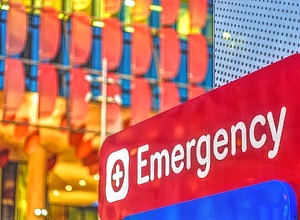A four-nation retrospective cohort study of more than 24,000 trauma patients supports the concept of the “golden hour” during prehospital care
Some clinicians consider that after a traumatic injury, patients are most likely to survive if they receive medical treatment within one hour – the so-called “golden hour.” A study led by Chiang Wen-Chu at National Taiwan University Hospital, Yunlin Branch explores that idea, finding that longer delays in treatment could increase a patient’s risk of disability or death.
While the concept of the golden hour was first proposed in the 20th century, studies have offered conflicting results over whether treatment in the first hour is vital to survival. Wen-Chu and his colleagues investigated this idea through a retrospective study of more than 24,000 trauma patients in Japan, Malaysia, Korea and Taiwan, who were transported to a hospital by emergency services between 2016 and 2018.
The authors used statistical methods to identify relationships between the “prehospital time” before treatment and patient outcomes, taking into account factors such as age, sex, type and severity of the injury, and any prehospital medical treatments. Overall, the length of prehospital time was not related to a patient’s risk of dying within 30 days of the trauma incident, but every 10-minute delay was associated with a 6% increase (95% confidence intervals 4-8%, p<0.001) in the odds of a poor outcome, such as a severe disability.
The authors support the idea of the golden hour because their findings suggest that rapid transportation may be associated with reduced risk that a patient will suffer poor quality of life or be unable to return to normal daily activities after an injury. Multiple factors can affect how long it takes a trauma patient to reach the hospital, including the response speed of emergency services, the distance to the hospital and the severity of the patient’s condition. Additionally, the authors urge emergency services staff to make the most of that prehospital time, to promote the best possible outcomes for patients.
Abstract
Background: Whether rapid transportation can benefit patients with trauma remains controversial. We determined the association between prehospital time and outcome to explore the concept of the “golden hour” for injured patients.
Methods and findings: We conducted a retrospective cohort study of trauma patients transported from the scene to hospitals by emergency medical service (EMS) from January 1, 2016, to November 30, 2018, using data from the Pan-Asia Trauma Outcomes Study (PATOS) database. Prehospital time intervals were categorized into response time (RT), scene to hospital time (SH), and total prehospital time (TPT). The outcomes were 30-day mortality and functional status at hospital discharge. Multivariable logistic regression was used to investigate the association of prehospital time and outcomes to adjust for factors including age, sex, mechanism and type of injury, Injury Severity Score (ISS), Revised Trauma Score (RTS), and prehospital interventions. Overall, 24,365 patients from 4 countries (645 patients from Japan, 16,476 patients from Korea, 5,358 patients from Malaysia, and 1,886 patients from Taiwan) were included in the analysis. Among included patients, the median age was 45 years (lower quartile [Q1]–upper quartile [Q3]: 25–62), and 15,498 (63.6%) patients were male. Median (Q1–Q3) RT, SH, and TPT were 20 (Q1–Q3: 12–39), 21 (Q1–Q3: 16–29), and 47 (Q1–Q3: 32–60) minutes, respectively. In all, 280 patients (1.1%) died within 30 days after injury. Prehospital time intervals were not associated with 30-day mortality. The adjusted odds ratios (aORs) per 10 minutes of RT, SH, and TPT were 0.99 (95% CI 0.92–1.06, p = 0.740), 1.08 (95% CI 1.00–1.17, p = 0.065), and 1.03 (95% CI 0.98–1.09, p = 0.236), respectively. However, long prehospital time was detrimental to functional survival. The aORs of RT, SH, and TPT per 10-minute delay were 1.06 (95% CI 1.04–1.08, p < 0.001), 1.05 (95% CI 1.01–1.08, p = 0.007), and 1.06 (95% CI 1.04–1.08, p < 0.001), respectively. The key limitation of our study is the missing data inherent to the retrospective design. Another major limitation is the aggregate nature of the data from different countries and unaccounted confounders such as in-hospital management.
Conclusions: Longer prehospital time was not associated with an increased risk of 30-day mortality, but it may be associated with increased risk of poor functional outcomes in injured patients. This finding supports the concept of the “golden hour” for trauma patients during prehospital care in the countries studied.
Authors
Chi-Hsin Chen, Sang Do Shin, Jen-Tang Sun, Sabariah Faizah Jamaluddin, Hideharu Tanaka, Kyoung Jun Song, Kentaro Kajino, Akio Kimura, Edward Pei-Chuan Huang, Ming-Ju Hsieh, Matthew Huei-Ming Ma, Wen-Chu Chiang
[link url="https://journals.plos.org/plosmedicine/article?id=10.1371/journal.pmed.1003360"]PLOS Medicine abstract[/link]

